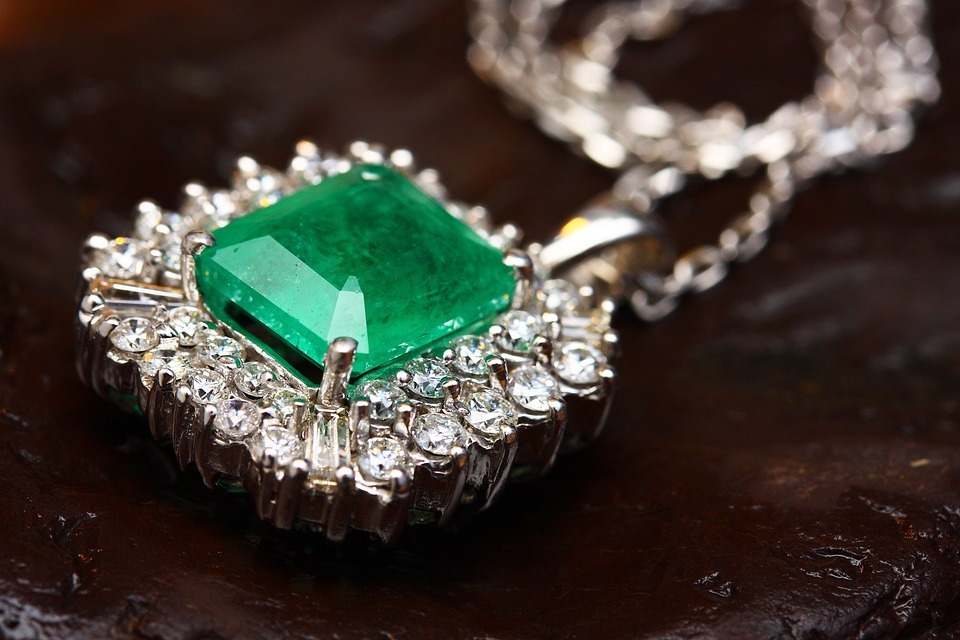For centuries, emeralds have captivated the human imagination with their dazzling green hues and inherent rarity. From Cleopatra’s legendary love for these precious gemstones to their modern-day popularity among celebrities and fashion icons, emeralds continue to exude an alluring and timeless charm.
In this article, we will explore the fascinating history and allure of green emeralds, tracing their cultural significance from ancient times to the present day. We will delve into the symbolism, mythology, and lore surrounding emeralds, as well as examine how valued they are in the gemstone market.
Join us on a journey through the world of green emeralds and discover why they continue to be one of the most coveted and prized gemstones in the world.
Let’s get started!
Origin, History, and Ancient Legends
Green emeralds are a variety of mineral beryl. They are prized for their vibrant and distinctive green color. Their origins can be traced back to ancient times, with evidence of their use as far back as 1500 BC in Egypt.
In ancient Egyptian mythology, green emeralds were associated with the goddess Venus and said to protect lovers from infidelity. Every time the emerald detected treachery, it would report it by changing its color and turning pale.
The stones were believed to have healing properties and were often used in amulets and talismans. They were also symbolic of eternal youth and vitality.
The ancient Greeks and Romans also prized the gemstone, viewing it as a symbol of fertility and rebirth. The Greek philosopher Aristotle wrote that green emeralds could calm the mind and soothe the soul, while the Roman naturalist Pliny the Elder believed that they could cure diseases of the eyes and improve vision.
During the Middle Ages, green emeralds were popular among European royalty and nobility, who believed that the gemstones had the power to protect against evil spirits and bring good luck. They were also associated with the Christian church and were often used to adorn religious relics and objects.
The Value of Green Emeralds: Factors that Affect Their Worth
There are several factors that determine the value of green emeralds. A deep, vivid green color with a slightly bluish tint is considered ideal, while inclusions or internal flaws can significantly lower its value.
However, some inclusions, such as tiny needle-like inclusions called “jardin,” can enhance the beauty and uniqueness of the stone. A well-cut emerald will have good symmetry, proportions, and a smooth surface, and larger stones are rarer and, therefore, more valuable.
According to recent data, the average price per carat for high-quality green emeralds can range from $2,000 to $30,000 or more, depending on the above factors. Auctioned off at a whopping $5,511,500 at Christie’s, the “Rockefeller Emerald” is the most expensive and the largest flawless emerald ever sold.
If you’re interested in purchasing high-quality green emeralds, it’s important to choose a reputable and reliable retailer. Leibish is an internationally recognized specialist and online retailer of high-end diamonds and jewelry, with over 33 years of experience in the industry, that you could consider checking out.
They have a great customer return rate and are known for their exceptional customer service, providing a personalized and stress-free shopping experience. Additionally, they are committed to ethical and sustainable practices, ensuring that all of their gemstones are sourced responsibly and with transparency.
If you’re in the market for high-quality green emeralds, we recommend that you take a look at these Green Emeralds from Leibish. With their extensive experience and commitment to excellence, they might prove to be a trustworthy and reliable choice for all your jewelry needs.
Famous Green Emeralds: A Look at Iconic Jewelry Pieces and Their Owners
Emeralds have been cherished by royalty, celebrities, and collectors throughout history. Here’s a brief list of some of the most iconic green emerald jewelry pieces and the owners who have cherished them.
1. The Rockfeller Emerald
One of the world’s most well-known emeralds is the Rockefeller Emerald. It weighs 18.04 carats and has a vivid green color. It was once owned by John D. Rockefeller Jr., who purchased it from a dealer in 1930. After Rockefeller’s death, the precious stone was sold at auction for over $5.5 million, with the proceeds going to charity.
2. The Patricia Emerald
The Patricia Emerald is a 632-carat emerald that is one of the largest uncut emeralds in the world. The emerald was discovered in Colombia in 1920 and was named after its owner, Patricia Emerald. Over the years, the emerald changed hands several times before being purchased by a private collector in 1971. Today, the emerald is on display at the American Museum of Natural History in New York City.
3. The Chalk Emerald
This is a 37.82-carat emerald that is part of a necklace created by Harry Winston. The necklace was purchased by Marjorie Merriweather Post, the heiress to the Post cereal fortune, in 1950. It was once owned by the Maharani Saheba of Baroda and is believed to have been mined in Colombia. Today, the necklace is part of the Smithsonian Institution’s National Gem Collection.
4. The Hooker Emerald
The Hooker Emerald is a 75.47-carat emerald that was once owned by Abdul Hamid II, the last Ottoman Sultan. The emerald was later purchased by Tiffany & Co. and was eventually donated to the Smithsonian Institution by Mrs. Janet Annenberg Hooker in memory of her husband. Today, the Hooker Emerald is on display at the National Museum of Natural History.
Conclusion
Whether you are a collector, jewelry enthusiast, or simply someone who loves gemstones, this article provides valuable insights into one of the most treasured gems in the world.
It will also help readers make informed decisions when it comes to purchasing or investing in emeralds, as well as deepen their appreciation for the rich cultural history associated with these magnificent gemstones.

